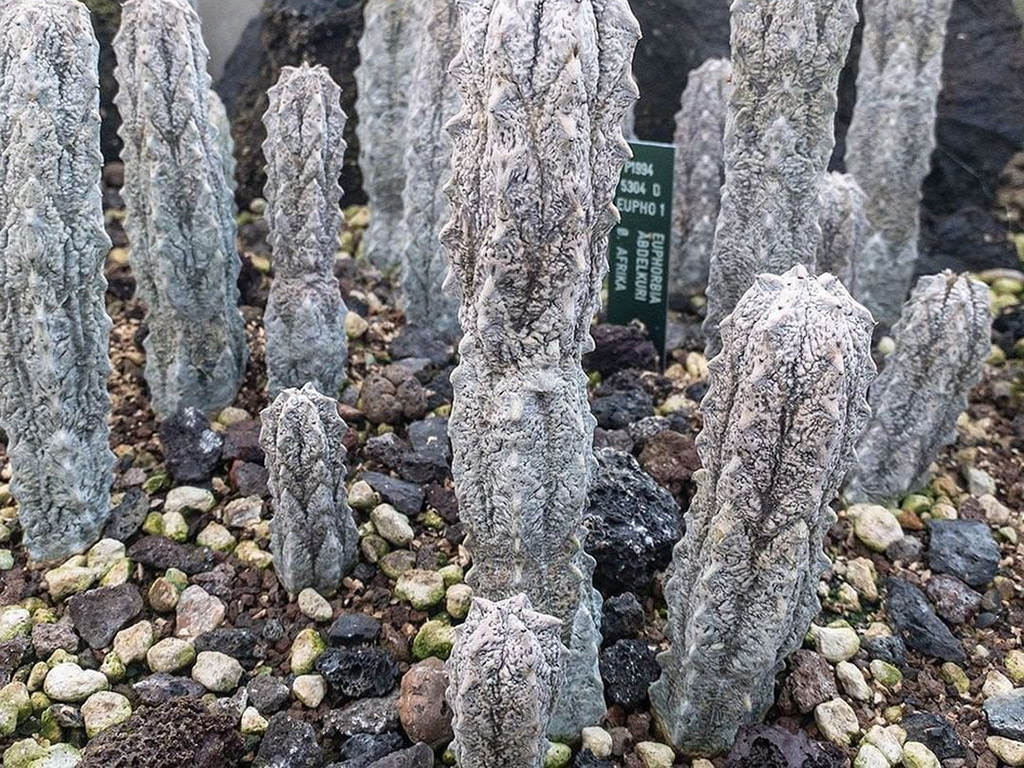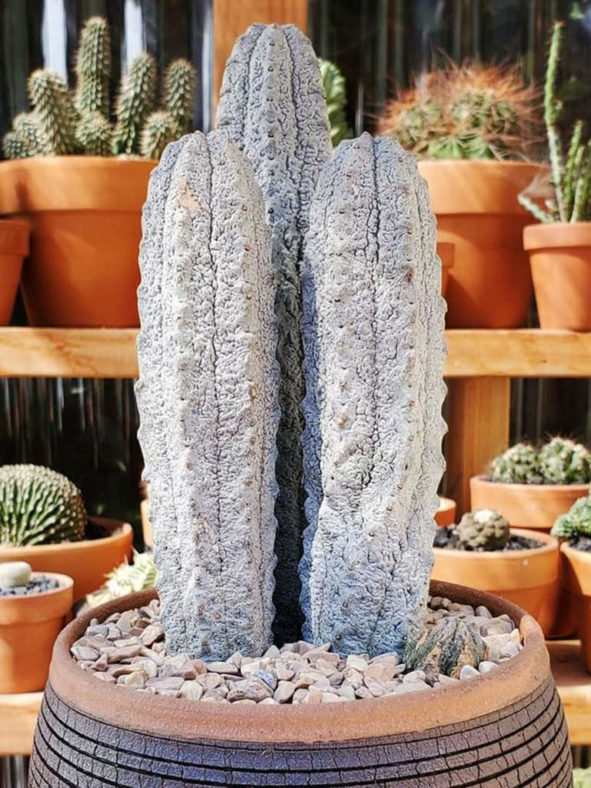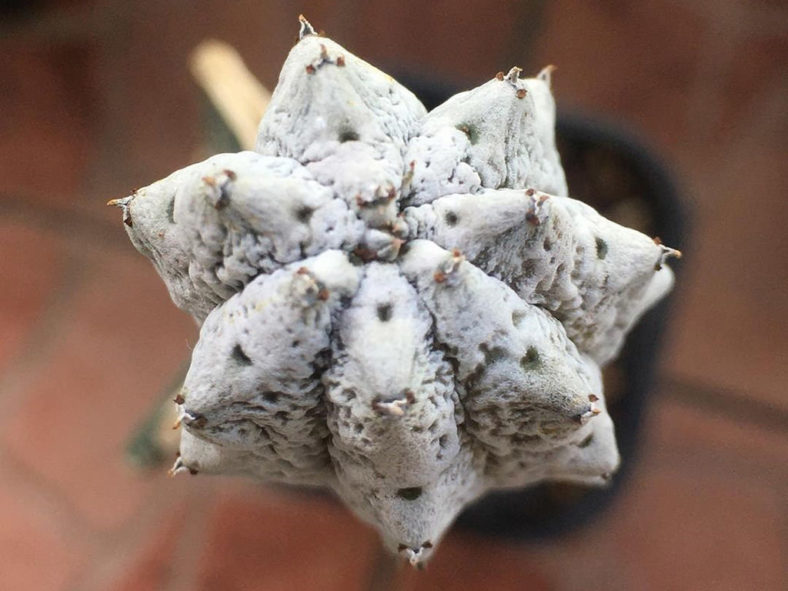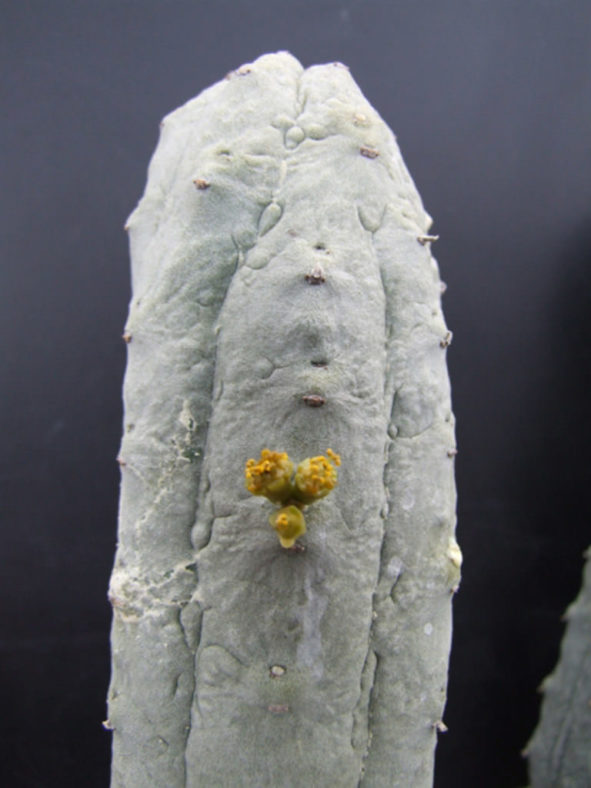Scientific Name
Euphorbia abdelkuri Balf.f.
Scientific Classification
Family: Euphorbiaceae
Subfamily: Euphorbioideae
Tribe: Euphorbieae
Subtribe: Euphorbiinae
Genus: Euphorbia
Etymology
The specific epithet "abdelkuri (ab-del-KOO-ree)" refers to Abd al Kuri, the island from which this species originates.
Origin
Euphorbia abdelkuri is endemic to Abd al Kuri, a rocky island in the Socotra Archipelago, one of the governorates of Yemen. It grows on granitic gravel and limestone slopes at elevations ranging from 750 to 890 feet (230 to 270 m).
Description
Euphorbia abdelkuri is a weird, clumping succulent with spineless, columnar, more or less cylindrical stems with generally six ribs and somewhat wrinkled, greenish-gray to ash-gray or tan epidermis. It can grow up to 3 feet (90 cm) tall, usually branching from the base and forming a clump that can reach up to 5 feet (1.5 m) in diameter. The stems look like grey candles with melted wax on them.
The cyathia are about 0.2 inches (0.5 cm) in diameter, have yellowish nectar glands, and appear on short peduncles towards the top of the stems.

How to Grow and Care for Euphorbia abdelkuri
Light: This succulent loves the sun. Place your indoor E. abdelkuri in a sunny window. Place the pot on the balcony or in the garden from spring to fall. Increase sun exposure gradually to prevent sunburn.
Soil: E. abdelkuri requires well-drained soil. Use a commercial potting mix formulated for succulents, or make your own.
Hardiness: High summer temperatures are not a problem, but low winter temperatures can damage or kill your plant. E. abdelkuri can withstand temperatures as low as 35 to 50 °F (1.7 to 10 °C), USDA hardiness zones 10b to 11b.
Watering: From spring to fall, water when the soil's top inch (2.5 cm) feels dry. Reduce watering in winter. Give it just enough water to prevent wilting. In the warm season, the best time of the day to water your E. abdelkuri is the evening.
Fertilizing: Potted plants need regular feeding. Apply a balanced fertilizer in a 10-10-10 NPK formulation diluted to 1/4 strength weekly during the growing season.
Repotting: E. abdelkuri will benefit from repotting, but it does not need to be repotted yearly. When your plant is outgrowing its pot, it is time to repot it in a larger pot and give it a fresh potting mix. The repotting is best done in early spring, at the beginning of the growing season. Wear gloves, protective clothing, and appropriate eye protection when repotting this succulent.
Propagation: The easiest and fastest propagation method for this plant is by cuttings. It can also be grown from seeds, but it can be difficult to germinate and even hard to find. The best time to take cuttings is in spring or summer. Sow the seeds in spring.
Learn more at How to Grow and Care for Euphorbia.
Toxicity of Euphorbia abdelkuri
E. abdelkuri produces a toxic white milky sap that can irritate the skin and eyes. Therefore, keeping this plant away from children and pets is best.
Cultivars of Euphorbia abdelkuri
Links
- Back to genus Euphorbia
- Succupedia: Browse succulents by Scientific Name, Common Name, Genus, Family, USDA Hardiness Zone, Origin, or cacti by Genus
Photo Gallery
Click on a photo to see a larger version.


